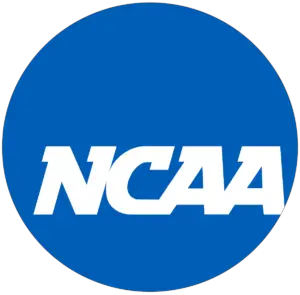 The NCAA Men’s and Women’s Ice Hockey Committee proposed an adjustment to the rules for checking from behind and contact to the head to provide game officials additional options when adjudicating these penalties.
The NCAA Men’s and Women’s Ice Hockey Committee proposed an adjustment to the rules for checking from behind and contact to the head to provide game officials additional options when adjudicating these penalties.
Under the recommendation, the committee is providing guidance and additional levels of penalty options.
All rule proposals must be approved by the NCAA Playing Rules Oversight Panel, which is scheduled to discuss ice hockey proposals June 6.
“The committee believes these important rules are having the intended impact to reduce dangerous contact from the game,” said Erik Martinson, deputy athletics director at North Dakota and chair of the committee. “Our coaches and game officials indicated strong support for these adjustments. We believe the proposed changes will make these important safety rules stronger and more effective.”
The committee would strengthen rules regarding clear violations of contact to the head to include a major penalty (five minutes) and at least a game misconduct or disqualification. The past two years, a standalone major penalty was permitted to be enforced in some instances. Along with this adjustment, a minor penalty option is available to game officials. This is intended only for actions that are inadvertent or the player making contact is using otherwise legal tactics.
Officials will have all options available for hitting-from-behind infractions (minor, major and major/game misconduct or disqualification).
“To be clear, this is not a move to allow or encourage dangerous contact,” Martinson said. “In reviewing numerous plays, it is clear there is a need for a more moderate option.”
Rules committee members discussed checking from behind thoroughly and focused on the growing trend of players turning to create contact, often just before it occurs. With contact to the head, the committee focused on players delivering contact, particularly cases where otherwise legal contact resulted in a major penalty. Game officials will be given more latitude to consider an opponent’s actions causing contact to the head or checking from behind.
High-sticking the puck
Committee members advanced a proposal saying pucks played at shoulder height would be legal and not whistled for a high-stick violation. Currently, any puck played with a stick above 4 feet is considered a high-sticking violation. The committee is simplifying the rule to shoulder height as a way of taking away the need for on-ice officials to judge whether the puck is 4 feet off the ice. This standard will also be used when goals are scored.
Shootouts
To standardize competition, the committee voted to mandate the use of a shootout after the five-minute 3-on-3 overtime period. NCAA championships selection committees have indicated that a shootout will not be part of any selection criteria.
Other rules proposals:
- When using video replay, officials will have the ability to review a major penalty and downgrade it to a minor penalty or no penalty. Officials can add to a major penalty during the review (e.g., game misconduct or disqualification).
- As part of the supplementary discipline process, a conference can appeal a disqualification penalty to the secretary-rules editor and national coordinator of officials. No other penalties could be appealed or reduced.
- The committee voted to remove “deliberately directed” from the hand pass rule and more closely align with the National Hockey League.
- In postseason games that use a video replay official, it is optional to clear game-winning goals in overtime. If a review is needed, the on-ice officials will make the final determination.
- A rule proposal dealing with continuous play was also approved. When a referee signals a stoppage of play because he/she has lost sight of the puck but, in the immediate and continuous action, the puck enters the goal, officials will be allowed to award a goal. Previously, blowing the whistle took away this option.
- The committee voted to remove a rule dealing with the scoring of a goal during a delayed penalty. Previously, if a goal was scored during a delayed penalty call, the penalty was enforced, and the nonoffending team received a power play. Removing this rule will result in the penalty being nullified.
- The committee reviewed the rules language and guidance for contact in women’s ice hockey. The group approved some additional language to assist, identifying unintentional collisions and plays where the pursuit of a loose puck creates contact.
- Trevor Large, head men’s coach at Canisius, was named chair of the committee.

